| DESCRIPTION | HISTORY |
Please Click on any Image for a Larger Version
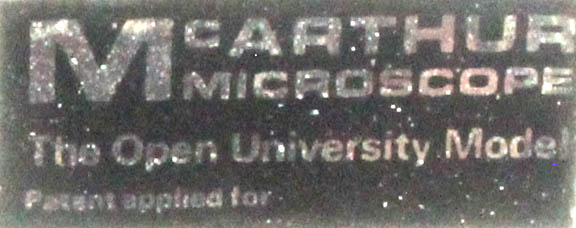 The microscope, made mainly of white plastic with a metal alloy stage has an applied signature label reading:
The microscope, made mainly of white plastic with a metal alloy stage has an applied signature label reading: McARTHUR MICROSCOPE, The Open University Model, Patents applied for.It has its serial number hand written on the outside box, on the styrofoam inside the box, on the instruction manual, on the inspection card, and scratched on to the end of the microscope, immediately below a printed label with the same serial number.
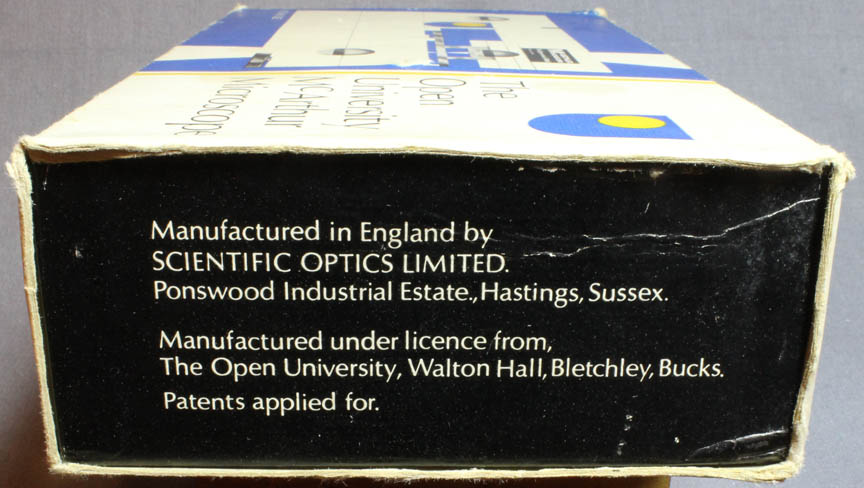 The instrument came in its original styrofoam-lined blue and white cardboard box which is labeled on its end:
The instrument came in its original styrofoam-lined blue and white cardboard box which is labeled on its end: Manufactured in England by SCIENTIFIC OPTICS LIMITED, Ponswood Industrial Estate, Hastings, Sussex. Manufactured under licence from, The Open University, Walton Hall, Bletchley, Bucks. Patents applied for.It also came with the original instruction and assembly booklet, copyrighted 1972. This instrument, made almost entirely of plastics, measures 5 inches X 3 inches X 1 inch. It has glass optics. The rotating round stage is calibrated in single degrees. It is made of metal alloy and has a chrome plated stage clip with a central hole. There are two objectives and a single fixed ocular. The ocular has crosshairs.
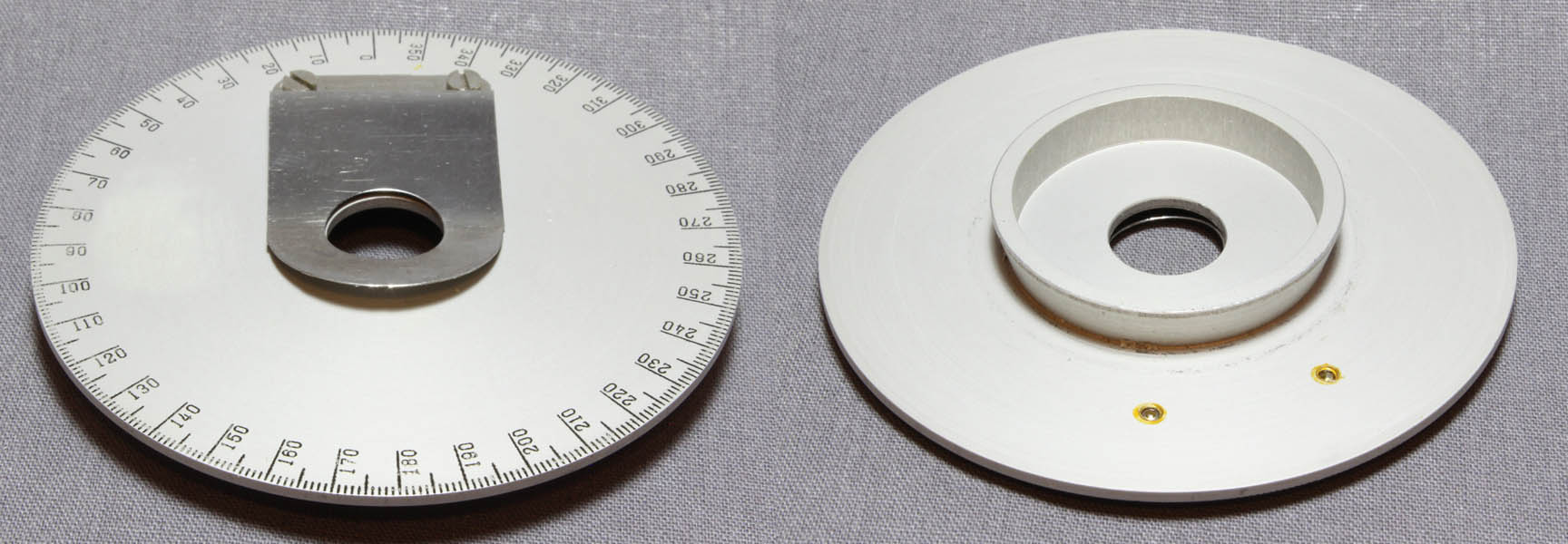
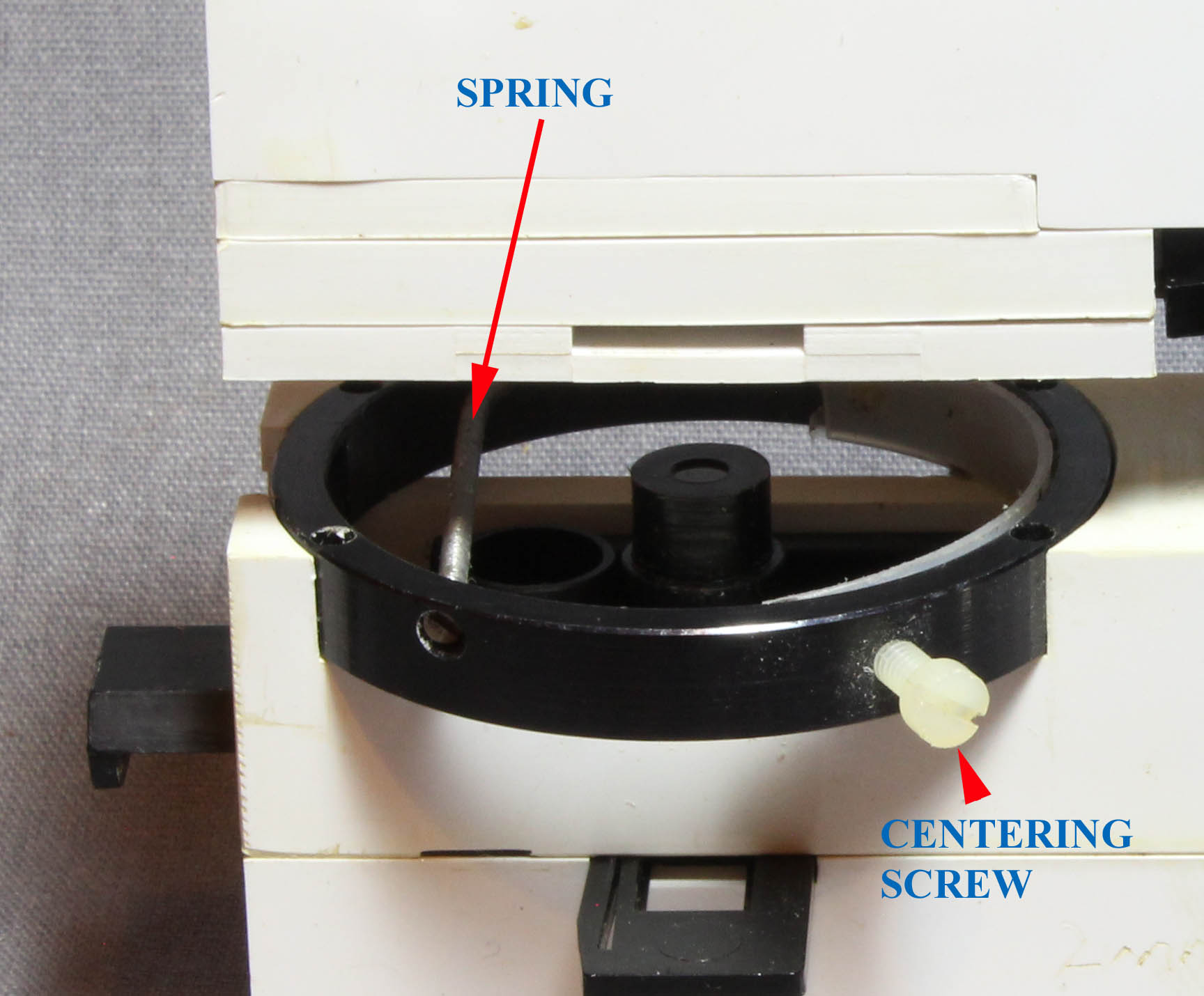 The metal stage is pressed against two centering screws by a spring which is strung accross the ring into which the stage fits. Placing the stage there after it has been removed from the microscope requires a tweezer or forceps to hold the spring away until the stage is in place.
The metal stage is pressed against two centering screws by a spring which is strung accross the ring into which the stage fits. Placing the stage there after it has been removed from the microscope requires a tweezer or forceps to hold the spring away until the stage is in place. 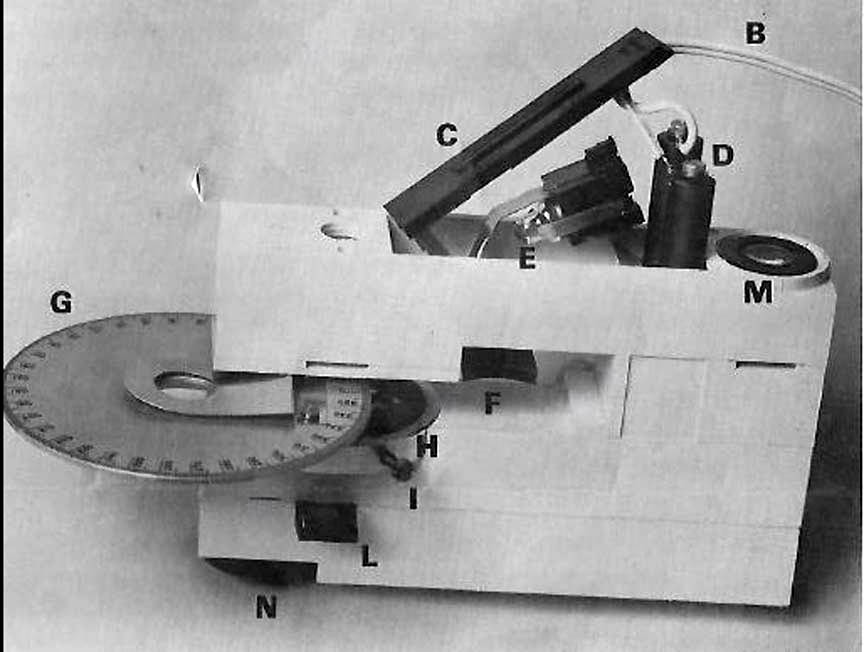 The microscope came with adapters (D) that fit in the battery compartment to allow an external source of electricity to power the bulb. The original transformer is not present but a modern replacement designed to be used with American electical outlets is now with the instrument. The microscope has both a polarizer (L) and a analyzer(F) and each can be pushed in or pulled out of the optical axis.
The microscope came with adapters (D) that fit in the battery compartment to allow an external source of electricity to power the bulb. The original transformer is not present but a modern replacement designed to be used with American electical outlets is now with the instrument. The microscope has both a polarizer (L) and a analyzer(F) and each can be pushed in or pulled out of the optical axis. 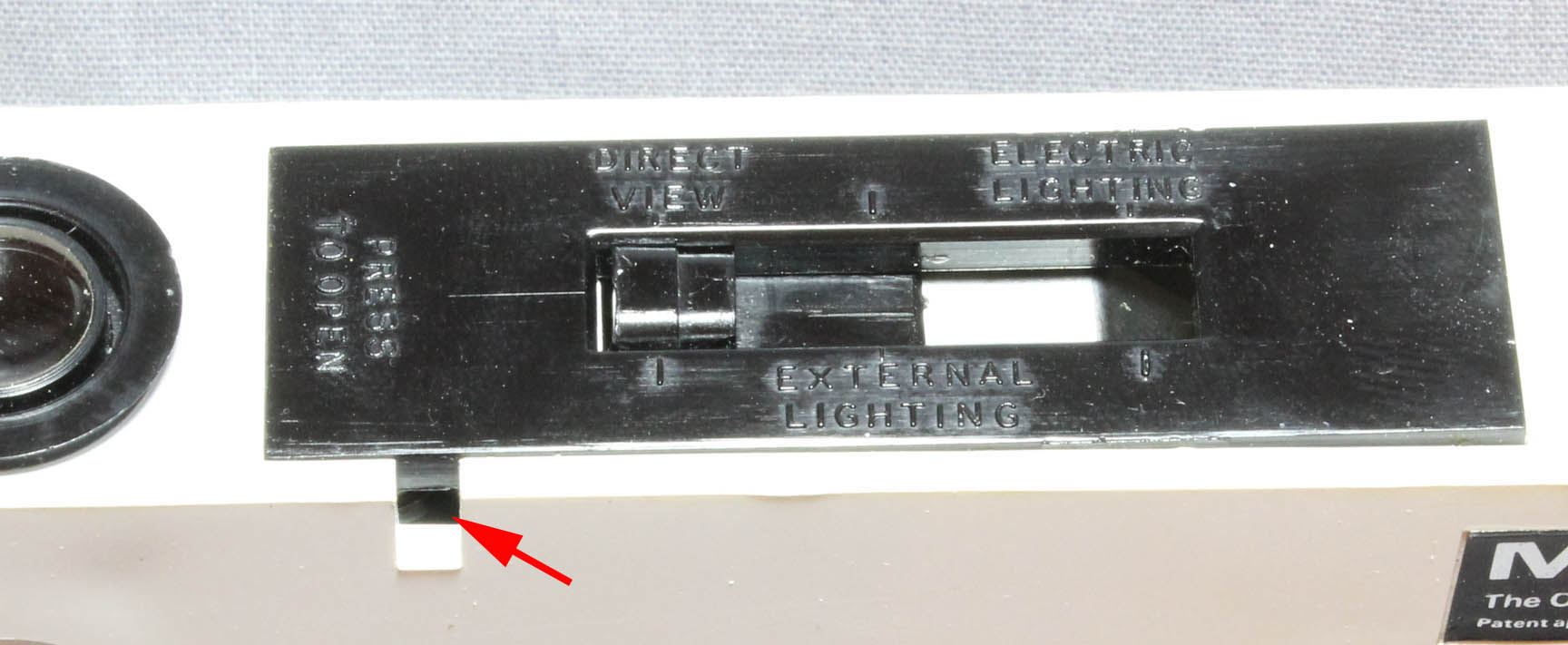 The patented combined illuminating apparatus and switch was a new design as shown in the patent drawings. The three position control is marked in positions from back to front, labelled 'direct view', 'external lighting' , and 'electric lighting'. This is the same as the ordinary biological model, but the instructions point out that only the electric lighting mode would be satisfactory when using the polarizing features. The image to the left also shows the cutout where the wires from the external source of electricity enters the battery compartment (arrow).
Focusing is achieved by bending the slider holding the objectives upward; unlike the metal
versions though this is by a direct-acting plastic screw from the bottom.
The patented combined illuminating apparatus and switch was a new design as shown in the patent drawings. The three position control is marked in positions from back to front, labelled 'direct view', 'external lighting' , and 'electric lighting'. This is the same as the ordinary biological model, but the instructions point out that only the electric lighting mode would be satisfactory when using the polarizing features. The image to the left also shows the cutout where the wires from the external source of electricity enters the battery compartment (arrow).
Focusing is achieved by bending the slider holding the objectives upward; unlike the metal
versions though this is by a direct-acting plastic screw from the bottom.
 At the time this microscope was sold, a set of petrographic slides to accompany it was also produced. This uncommon original set now accompanies this microscope.
At the time this microscope was sold, a set of petrographic slides to accompany it was also produced. This uncommon original set now accompanies this microscope.
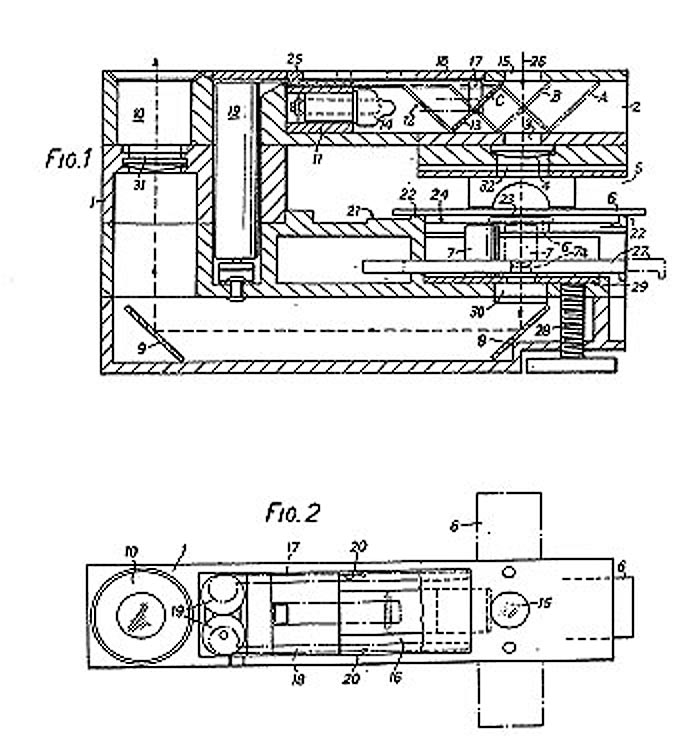 About 1971 the Open University in the U.K. needed many thousands of microscopes within a short period of time for a relatively low cost. The plastic Open University Microscope was then born. The two-objective standard version, sold for £15.50. A three-objective version (with a 40x added) sold for £29. The polarizing version cost £38.80 and a Open University Petrographic slide set was also available. For more details about the history of these Open University Models see the history
section of the page about the biological Open University Model.
About 1971 the Open University in the U.K. needed many thousands of microscopes within a short period of time for a relatively low cost. The plastic Open University Microscope was then born. The two-objective standard version, sold for £15.50. A three-objective version (with a 40x added) sold for £29. The polarizing version cost £38.80 and a Open University Petrographic slide set was also available. For more details about the history of these Open University Models see the history
section of the page about the biological Open University Model.